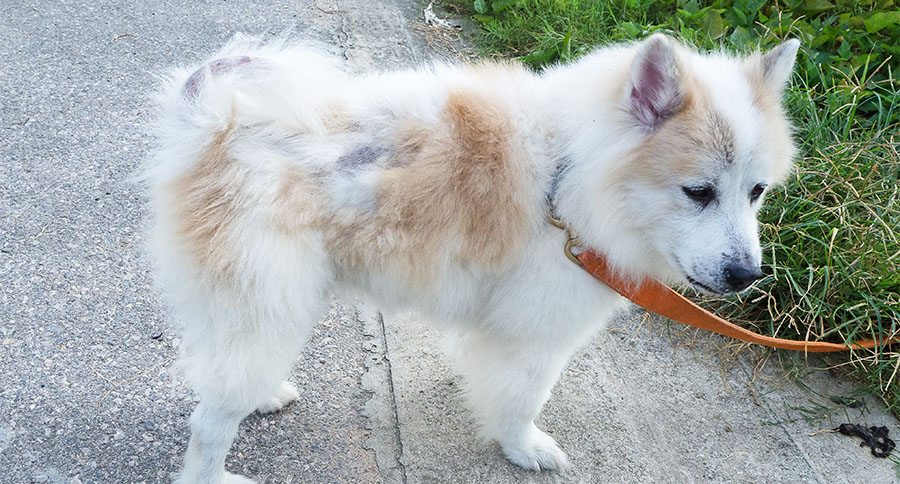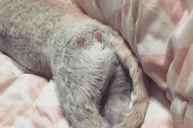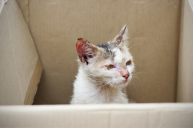If you dog has hair loss, he or she might have Alopecia X.
Alopecia X is a breed-specific hormone hair-loss disorder most commonly affecting Nordic breeds, like Siberian Huskies and Alaskan Malamutes, Chow Chows, Samoyeds, and Toy or Miniature Poodles. It's caused by an imbalance of the sex hormones estrogen and testosterone which are produced by the adrenal glands.
Dogs with the disorder can appear completely bald, either in patches or all over their body. Other names for Alopecia X include Adult Onset Growth Hormone Deficiency, Growth Hormone-Responsive Alopecia, Castration-Responsive Alopecia, and Adrenal Hyperplasia-Like Syndrome. In Malamutes, it's often termed Coat Funk of Malamutes and in Pomeranians, Black Skin Disease of Pomeranians.
Regardless of whether or not the pet is fixed or male or female, they can show clinical signs of the disease. Early onset symptoms appear around one year old but in some cases, hair loss doesn't occur until as old as 10 years in some affected dogs.
Initial stages of gradual hair loss typically occurs along the trunk and back legs. The hair may fall out completely or leave a fluff before turning to complete baldness. Oftentimes the pigment of any revealed skin turns darker, even black—hence the alternate term "Black Skin Disease."
No other symptoms are associated with Alopecia X other than hair loss and pigmentation changes. Therefore, if your dog is showcasing signs of baldness in addition to changes to normal behavior—like inappetence or excess urination—another underlying disease including Cushing's Disease and hypothyroidism may be the culprit. To determine the root cause of gradual loss of hair, it is important to schedule a visit with your pet's veterinarian.
While spayed, neutered, and intact canines can all have the disease, sometimes intact animals can revert back to normal hair growth once fixed due to the hormonal changes associated with spaying and neutering. Sometimes hair regrowth is only temporary, though.
Alopecia X is considered only a cosmetic condition, so treatment isn't critical. Focusing on the hair follicle health through medicated shampooing and hormone control can be beneficial as a treatment option. Melatonin is one naturally-occurring hormone that can be given in supplement form to normalize a dog's coat. Managing the adrenal glands, a hormone center within the body, can also help regulate fur growth.
Research is ongoing with veterinary dermatologists to determine more effective treatments for Alopecia X.
Has your dog ever experienced hair loss? What was the cause? Tell us in the comments below?
WATCH NOW: Siberian Husky Dogs Are Wild!




